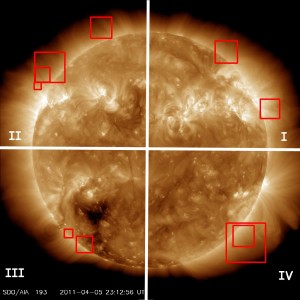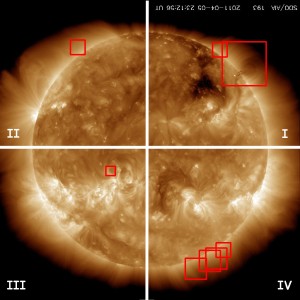In running through tests against all the haarcascades I create, I noticed that the number of Misses in Quadrant III seemed surprisingly high, even when the cavity was a very distinct one.
Here is an example of the original image that was used to train the cascades. Here is an output file from the performance testing which shows the objects it detected as positive; there is the main cavity that is missed in Quadrant III.
I then tried rotating the image 180 degrees, and ran the performance tester on the set of images again and in the next image you see that now it detected the cavity now that its angle has changed and now resides in Quadrant I.
Because of this discovery, I am currently implementing a new technique of solar cavity detection. Attempting to take a good candidate cavity and rotate it along the rim of the entire disk. So now every quadrant has a good candidate along every position to teach the classifier. Next, in order to reduce false positives apply template matching within those regions of interest.
Tags: Haar Classifier, haar training, opencv, solar cavity, testing outcomes, thesis

